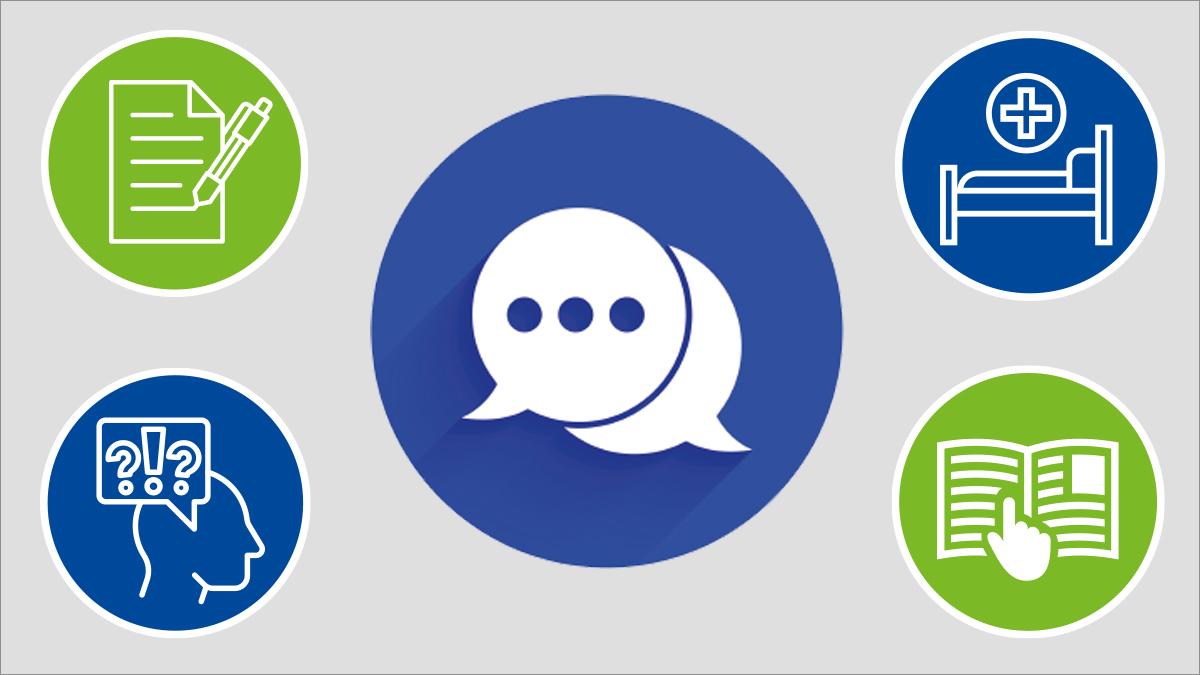NIHR Evidence Collection which covers research on how we can help people understand health information

This summary article reports on an NIHR Evidence Collection which covers research on how we can help people understand health information and which groups of the population may require extra support. It also offers useful pointers to consider when providing health information.
‘It is the duty of health information producers to be ‘health-literacy’ friendly in all they do. It is a crucial element of tackling health inequality and misinformation,’ says Sophie Randall, director at the Patient Information Forum (PIF).
Around half of the population struggles to understand information that can help them manage their own health and care. Understanding health information (health literacy) is essential for taking medications correctly, knowing which health services to use, and managing long-term conditions. The most disadvantaged groups in society are most likely to have limited health literacy. Efforts to improve health literacy could therefore reduce health inequalities.
How can we help people understand health information?
- use simple, balanced language.
- find the focus.
- give context to online information.
- use videos, visual and social media.
Simple, balanced language
People with lived and professional experience can provide helpful guidance on ways of making health information understandable. Top tips include using labelled images, providing balanced information, avoiding technical jargon and explaining how reliable the evidence is.
Finding the focus
The focus of information can affect how people act on it. For example, stressing the personal benefits of the Covid-19 vaccine encouraged people who were hesitant to consider vaccination. This focus was more effective than stressing benefits to the community or addressing safety concerns.
Online information needs to be relevant
Many people access health information online. However, it can be difficult to assess the reliability of online information, or its relevance to an individual’s circumstances. The internet can also be a barrier to accessing health information. Digital platforms can help get health content to many people, but the information also needs to be accessible offline.
Visuals, videos, and going viral
Images (including pictures and diagrams), animations, and videos can help communicate information to the general public.
They are especially important for groups who may need extra support to understand health information. Videos and theatre performances can also be used to communicate health-related information to a wide audience as can social media; including, for example, videos and images posted on TikTok, Twitter, Instagram, and YouTube.
Who may face extra barriers understanding health information?
People facing language barriers; people with language difficulties and learning disabilities; people living with dementia and communities with low literacy are all groups who may face extra barriers in understanding health information. The full NIHR Collection offers evidence-based examples and tailored solutions to help address unique barriers to health information provision and understanding in these key groups.
Conclusion
Supporting all members of the population to understand health information can help them manage their own health, wellbeing, and care. The consequences of this can be far-reaching, influencing individuals’ life opportunities, the NHS’ workload, and care costs. It can also be a step towards tackling health inequality. The needs of each individual are unique and linked to their prior experiences, literacy levels, and communication preferences. These needs should be considered when developing and providing health information.
This summary reports on a recent NIHR (National Institute for Health and Care Research) Evidence Collection article which brings together health literacy messages from NIHR research.
Expert View
Nick Livadas, clinical lead, Connect Health; senior lecturer, Teesside University; personalised care ambassador, Personalised Care Institute

This concise report on a NIHR Evidence Collection will hold relevance to all practicing physiotherapists. An important role within the physiotherapy encounter is the provision of information to enable people to understand their own health condition and plan how to improve their function. We may take for granted how well understood that information is which can be a barrier to patients engaging with therapy and suggested lifestyle changes.
The findings here may prompt you to review the leaflets or videos you provide to patients and ask yourself how well these could be understood by people with low health literacy. You could copy and paste the text from your leaflets or care plans into a readability calculator that can estimate the reading age. If you only provide written information, you may wish to consider if you could explore the use of pictures, diagrams or video messages.
To assess how well the information you offer is understood, you may wish to consider the use of ‘Teach-back’.
This is now a NICE recommended communication skill to enhance shared decisions.
More information
- More than 4 in 10 adults struggle to understand health content written for the public.
- Low health literacy has been linked to poor general health, increased hospital admissions, low vaccination uptake and reduced life expectancy.
- In the UK 7.1 million adults read at, or below the level of an average 9 year old.
- Groups at risk include communities with language barriers, people with learning disabilities and people living with dementia.
Teach-back
A short online tutorial on Teach-back from the Personalised Care Institute. QR code.
Number of subscribers: 1
